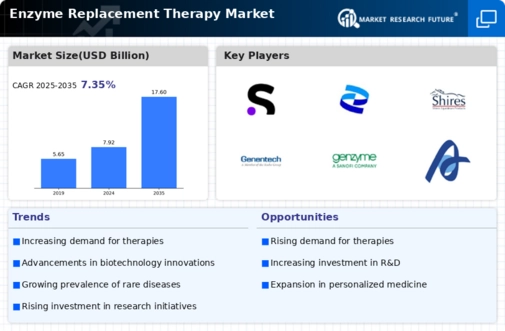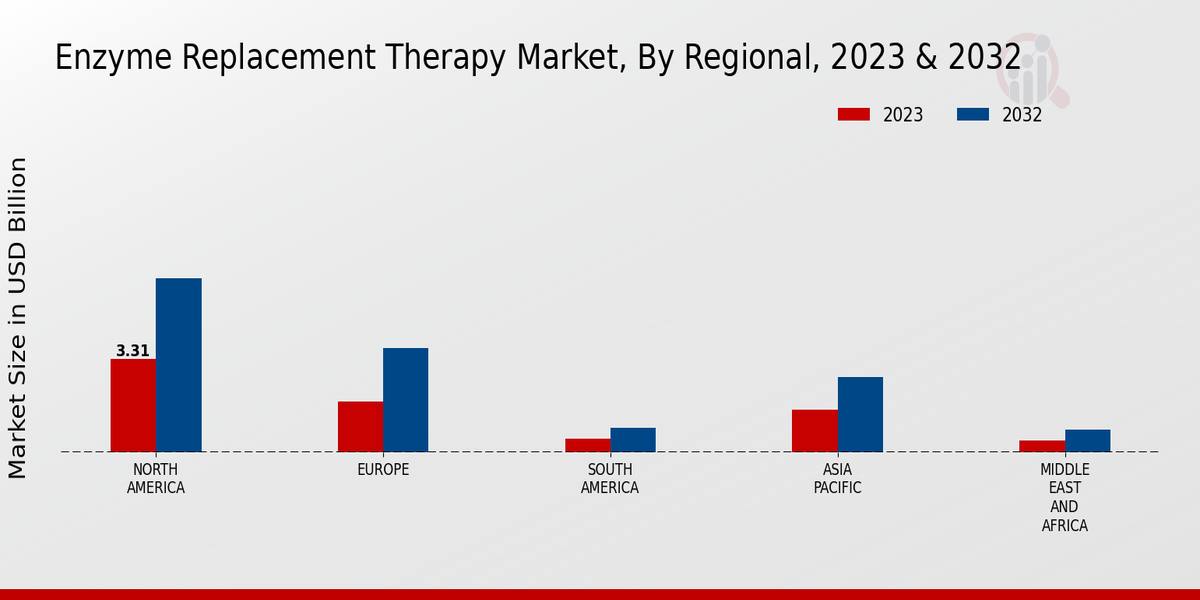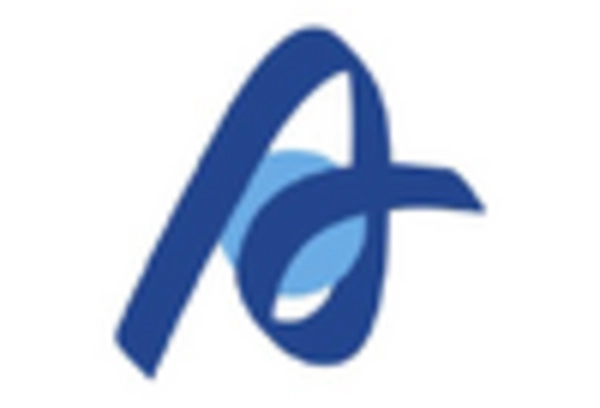Supportive Regulatory Frameworks
Supportive regulatory environments are fostering growth in the Enzyme Replacement Therapy Market. Regulatory agencies are increasingly recognizing the need for expedited approval processes for therapies targeting rare diseases. Initiatives such as orphan drug designations and fast-track approvals are encouraging pharmaceutical companies to invest in enzyme replacement therapies. These regulatory incentives not only reduce the time to market for new treatments but also enhance the financial viability of developing therapies for rare conditions. As a result, the Enzyme Replacement Therapy Market is expected to benefit from a steady influx of innovative products, addressing unmet medical needs and improving patient outcomes.
Advancements in Biopharmaceuticals
Technological innovations in biopharmaceuticals are propelling the Enzyme Replacement Therapy Market forward. The development of novel enzymes and improved delivery mechanisms enhances the efficacy and safety profiles of enzyme replacement therapies. Recent breakthroughs in recombinant DNA technology and protein engineering have led to the creation of more effective therapeutic enzymes. This progress not only increases treatment options for patients but also attracts investment from pharmaceutical companies eager to capitalize on these advancements. As a result, the Enzyme Replacement Therapy Market is witnessing a surge in new product launches, with several therapies entering the market in the coming years, potentially increasing competition and accessibility.
Rising Prevalence of Genetic Disorders
The increasing incidence of genetic disorders is a primary driver for the Enzyme Replacement Therapy Market. Conditions such as Gaucher disease, Fabry disease, and Pompe disease are becoming more prevalent, leading to a heightened demand for effective treatment options. According to recent estimates, the number of diagnosed cases of these disorders has risen significantly, prompting healthcare providers to seek innovative therapies. This trend is likely to continue, as advancements in genetic testing improve diagnosis rates. Consequently, the Enzyme Replacement Therapy Market is expected to expand, with a projected growth rate of approximately 8% annually over the next five years, reflecting the urgent need for targeted therapies.
Increasing Investment in Rare Disease Research
The surge in investment directed towards rare disease research is a crucial driver for the Enzyme Replacement Therapy Market. Both public and private sectors are allocating substantial funds to develop new therapies for rare genetic disorders. This financial commitment is fostering collaborations between academic institutions and pharmaceutical companies, leading to innovative research and development initiatives. As a consequence, the Enzyme Replacement Therapy Market is likely to see a rise in the number of clinical trials and new product developments. This trend not only enhances the therapeutic landscape but also provides hope for patients suffering from rare diseases, potentially transforming their treatment options.
Growing Awareness and Diagnosis of Rare Diseases
The rising awareness surrounding rare diseases is significantly influencing the Enzyme Replacement Therapy Market. Increased educational initiatives and advocacy efforts have led to better recognition and diagnosis of these conditions. As healthcare professionals become more informed about the symptoms and treatment options available, more patients are being diagnosed and treated. This trend is reflected in the growing number of patients receiving enzyme replacement therapies, which has been reported to increase by over 15% in recent years. Consequently, the Enzyme Replacement Therapy Market is likely to experience sustained growth as more patients seek effective treatments for their diagnosed conditions.


















Leave a Comment